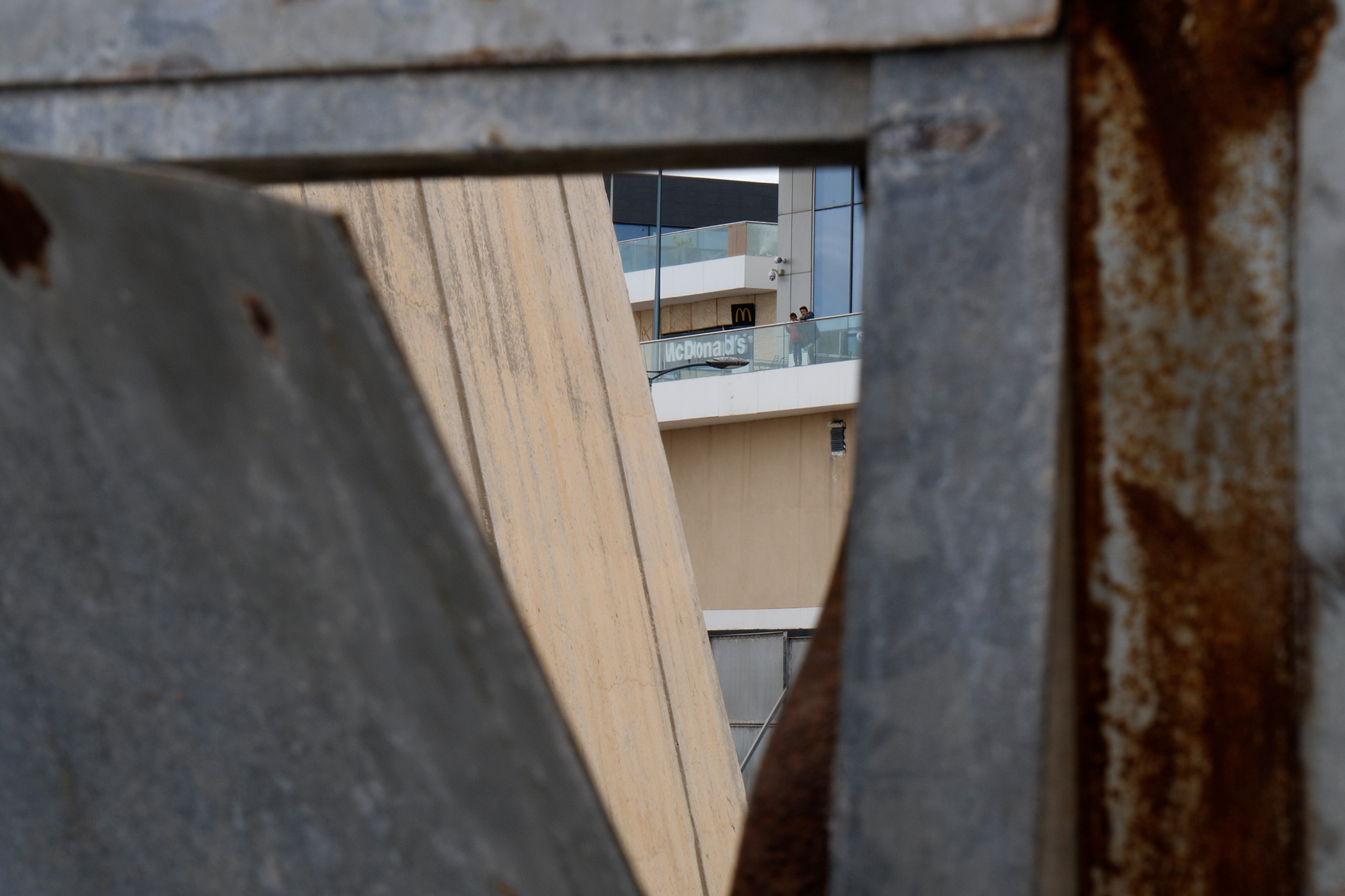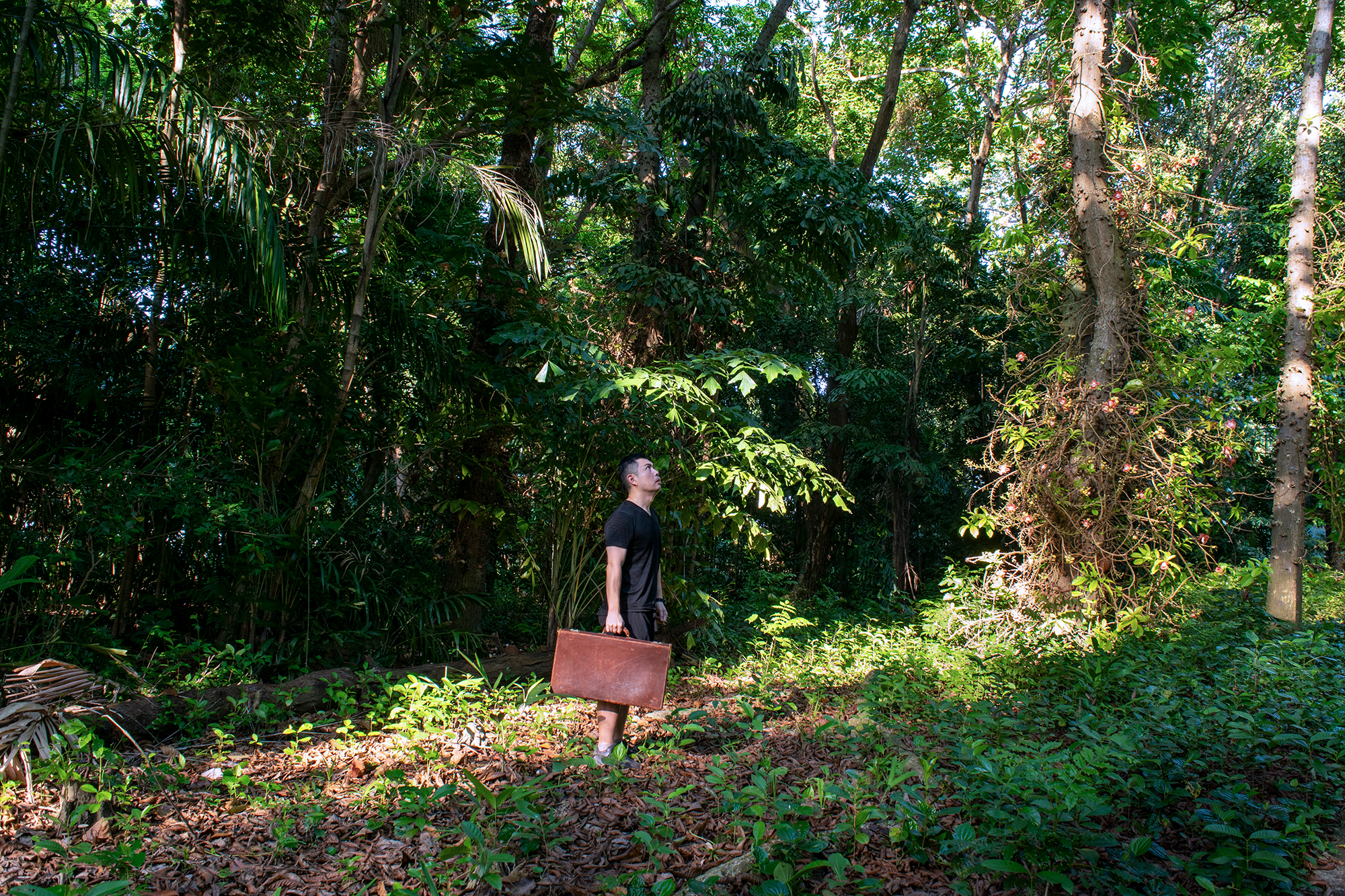What is a protest? And what does it mean to picket, to resist, to respond, and to give voice to one’s social and political concerns? In the wake of growing political uncertainty and the news of the United States withdrawal from the global Paris climate accords, a protest will occur from dawn to dawn, starting on June 3 at 5:12 am to June 4 at 5:12 am, on the White House sidewalk on Pennsylvania Avenue in Washington, DC. As political protests go, this may be the most unusual of them all. There are no shouted slogans, no placards, no bull-horns, or chanting. This political protest presents the bodies of people walking one step forward and two steps back in silence for a cycle of twenty-four hours. Speaking to the complexity of contemporary times, the bodies of the participants will carry messages through the visible and invisible signs of their existence and characteristics of their bodies.
In a moment in which protests are becoming a post-modern representation of the frivolity of entertainment and festive participation, what does one make of a person, of their history, and their repeated actions throughout a lifetime of labor? How does the contemporary self redefine physical embodiment of political activism?
Stefanos Tsivopoulos originally choreographed the well-known saying, “one step forward, two steps back,” which many Greeks used to say in order to sum up the current sociopolitical and economic condition in the country. The saying represents the belief that even though we move onward, we’re actually heading back because the steps forward are not enough to move us towards our goals or social-political progress. Tsivopoulos incorporated in the choreography gestures and movements from the ceremonial ritual that is performed by the Evzones, the National Guard situated in front of the Greek Parliament. The choreography was performed by two performers facing the Greek Parliament. Each step forward they took, was followed by two steps back, amounting to a backward movement that eventually located the performers away from the Parliament, and towards an existential place they couldn’t foresee.
Lanfranco Aceti together with Vera Ingrid Grant had initially proposed to the artist to replicate the performance in front of the United States’ White House, as a way of representing the weariness of the body engaged in the turmoil of contemporary post-democratic political processes; experiencing the “jagged grain” of lament and frustration, and yet vibrant with unruliness.
Stripped of any specific political message, the performers are dressed in black (as in the Athens performance). There will be 12 people, forming couples of two, who will alternate and walk on the sidewalk of the White House on Pennsylvania Avenue from 5:12 am of June 3 to 5:12 am of June 4, 2017.
The sociopolitical implications—of what is a very simple action—will speak volumes towards the understanding of a society devoid of conflict and will invite people to consider and re-interrogate the roots of social and political processes, which appear to be historically cyclical and stagnant.
Tsivopolous explained that when he “spoke to Lanfranco, one of the two curators, I told him that my original idea was to have it in real time and for a longer period of time, and maybe in a reaction space. This political contested space becomes part of the work and people, the passers by, everybody can become part of the work at the same time. So that’s how the whole discussion started. I’m extremely happy that of all the places on earth, we are able to do it probably in one of the most contested places that is also very well-known—and given these times as well.”
“Tsivopoulos’s work poetically focuses on the contemporary political processes,” explained Aceti,“which are currently pushing people further and further away from current political parties, institutional representation, and collective participation understood in traditional terms. The political protest in front of the White House shows the distance and divide that is being created between post-citizens and contemporary politics. Because of the event’s location, this is not not just a political happening but a much more open ended engagement that straddles between politics and art. It asks even larger questions which are basic to our lives as human beings: what is it that we have been fighting for as a society, why have people died, what is it that people have died for, and—most important of them all—was it worth it? So what could be seen as aesthetic and political questions become incredibly large philosophical questions. What I find appealing in this protest/performance and its participants is the notion of inscribed identity of the body as it relates to its sociopolitical context.”
Professor Vera Grant added, “the visual language and interpretation that we use in the States is so different from the Athenian landscape. Occasionally they kind of cross territories and connect, but very often there is a disconnect. So I was very interested in the translatability of this performance piece here in the States and in this particular moment. I think it has wonderful opportunities written in. It seems this particular climate since the election, and all the dynamics around the election year, have unleashed so many thoughts, feelings, and moments of activism that have drawn artists in. Art is pushing its way to the center of that conversation in wonderful ways. The whole idea of how art is a part of these greater conversations—whether it has agency, whether it has the ability to activate change or not, and what the role of art is. These have always been questions, but in this moment there is just this energy! This is a space were ‘we’—and when I say ‘we’ I’m talking about a certain group of people and artists that do want to effect change in society—take action.”
This project—a pop-up event—is a collaboration between the Museum of Contemporary Cuts (MoCC) and the Ethelbert Cooper Gallery of African & African American Art, Hutchins Center, Harvard University.
Following the event in Washington there will be a series of talks and discussions at international Universities which will lead to a final publication with the Leonardo Electronic Almanac (MIT Press).
Artist Biography
Stefanos Tsivopoulos is a Greek artist and filmmaker living and working between Amsterdam, Athens, and New York. His works often results from long-term research into historical films and photographic archives and is driven by an interest in the social, political, and economic aspects that determine the world we live in. He has exhibited extensively in both art museums and film festivals around the world.
A selection of Tsivopoulos’s recent exhibitions include DOCUMENTA 14, Friedericianum, Kassel (2017); Kunsthaus Zurich (2016); MACBA, Barcelona (2015); Tate Modern, London (2014); MuCEM, Marseille (2014); 2nd Beijing Biennial, Beijing (2014); Haus Der Culturen Der Welt, Berlin (2013); SALT, Istanbul (2012); Centre Pompidou, Paris (2011); Manifesta 8, Murcia (2010); Smart Project Space, Amsterdam (2010); Witte de With, Rotterdam (2010); BFI Southbank, London (2009).
In 2013, he represented Greece in the 55th Venice Biennial with his video installation History Zero.
Curators’ Biographies
Lanfranco Aceti works as an artist, curator, and academic. He is the director of Arts Administration at Boston University. He has done a range of exhibitions and public space interventions at renowned international venues including Tate Modern, MoMA, and the ICA London among others. He is Editor in Chief of the Leonardo Electronic Almanac (MIT Press, Leonardo journal), for which he has edited more than twelve volumes. He has lectured internationally at prestigious institutions such as Yale, Harvard, RCA, Goldsmiths, and Central Saint Martins. He worked as the director of Kasa Gallery in Istanbul, where he exhibited a range of innovative artworks including 75Watts by Revital Cohen and Tuur Van Balen (acquired by MoMA) and Paolo Cirio’s Loophole4All (awarded the 2014 Golden Nica at Ars Electronica). Recently he performed and curated Hope Coming On at the Museum of Fine Arts Boston, as well as curated The Small Infinite at the John Hansard Gallery with artworks never previously exhibited from the estate of John Latham. Lanfranco Aceti has participated in numerous art fairs such as Art Athina, Art International, Supermarket, and Contemporary Istanbul, either as a curator or as an artist. In 2011, he curated the exhibition Uncontainable as part of the parallel events of the 12th Istanbul Biennial and exhibited artworks on the media facade of the Museum of Contemporary Art, Zagreb. He has exhibited numerous personal projects including Car Park, a public performance in the UK; Who The People? an installation artwork acquired in its entirety by Chetham’s Library and Museum in Manchester; and Sowing and Reaping, installation artworks acquired in their entirety by the National Museum of Contemporary Art of Cyprus. As of 2017, Aceti has been asked to curate and prepare a series of exhibitions and projects including a large performance entitled Accursed for the Thessaloniki Biennial in Greece.
Vera Ingrid Grant is the director of the Ethelbert Cooper Gallery of African & African American Art at the Hutchins Center, Harvard University. She most recently curated THE WOVEN ARC (Summer 2016); and the Art of Jazz: NOTES (Spring 2016) at the Cooper Gallery; and The Persuasions of Montford at the Boston Center for the Arts (Spring 2015). Her curatorial approach leverages theories of visual culture to create an immersive exhibition experience charged with object driven dialogues. Grant is a Fulbright Scholar (University of Hamburg), has an MA in Modern European History from Stanford University, and is currently a fellow (2015-16) at the Center for Curatorial Leadership (CCL). Her recent publications include: Luminós/C/ity.Ordinary Joy, as editor; and author of: “E2: Extraction/Exhibition Dynamics” (Harvard University Press, January 2015); “Visual Culture and the Occupation of the Rhineland,” The Image of the Black in Western Art, Vol. 5, The Twentieth Century, (Harvard University Press, February 2014); and “White Shame/Black Agency: Race as a Weapon in Post-World War I Diplomacy” in African Americans in American Foreign Policy, (University of Illinois Press, February 2014).




